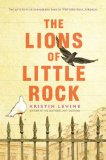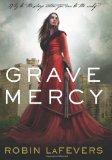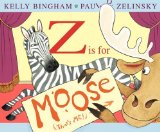Review of Vessel, by Sarah Beth Durst
by Sarah Beth Durst
Margaret K. McElderry Books (Simon & Schuster), 2012. 424 pages.
Starred Review
This book has a striking beginning:
On the day she was to die, Liyana walked out of her family’s tent to see the dawn.
Liyana’s dreamwalk has shown that she is to be a vessel, a vessel for the goddess Bayla to come among her people, the Goat Clan, and restore their oases and keep them alive.
Liyana has kept her body ready for Bayla, and she’s ready to dance and let the goddess take her body and send her own soul to the Dreaming. She thinks she does everything right. She dances all night. But Bayla does not come.
The tribal elders decide Liyana must be unworthy. They must travel on and leave her behind. If somehow they are wrong, Bayla will find her body and join them.
So Liyana stays in the desert and tries to survive a sandstorm on her own. Then a young man walks to her through the sand. He claims to be Korbyn, the trickster god. He was summoned five nights ago, and has come to find her.
“Me? But . . .” All calmness fled, and her voice squeaked. “Your clan! Your clan needs you!”
“All the clans need me,” he said. “And I need you.”
She understood the words he was saying, but the order of them made no sense. “You left your clan to find me?”
“Deities are missing. Five in total. They were summoned from the Dreaming, but their souls never filled their clans’ vessels.”
Liyana felt as if she had been dropped back inside the sandstorm. “Bayla . . .”
“I believe their souls were stolen. And I intend for us to steal them back.”
So begins a quest, a quest to find all the other vessels and then find who stole the gods.
I confess, I read this book in one stretch on a Sunday afternoon. I think I might enjoyed it more if I had spread it out and treasured the details more. We’ve got many clans of desert people living beside a great empire. The desert has many fantastical dangers, such as sand wolves and sandworms. And every hundred years or so, the gods choose vessels and come from the Dreaming to visit their people.
I don’t think I was completely happy with the ending, but I’m not sure I could have figured out any other satisfying way to end it. The world is wonderfully built, and I think I should have lingered longer.
sarahbethdurst.com
TEEN.SimonandSchuster.com
Find this review on Sonderbooks at: www.sonderbooks.com/Teens/vessel.html
Disclosure: I am an Amazon Affiliate, and will earn a small percentage if you order a book on Amazon after clicking through from my site.
Source: This review is based on a library book from the Fairfax County Public Library.
Disclaimer: I am a professional librarian, but I write the posts for my website and blogs entirely on my own time. The views expressed are solely my own, and in no way represent the official views of my employer or of any committee or group of which I am part.
Please use the comments if you’ve read the book and want to discuss spoilers!












